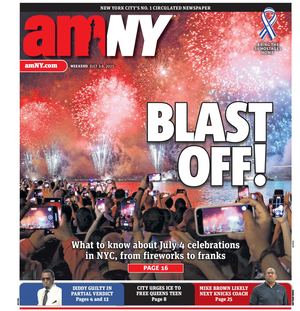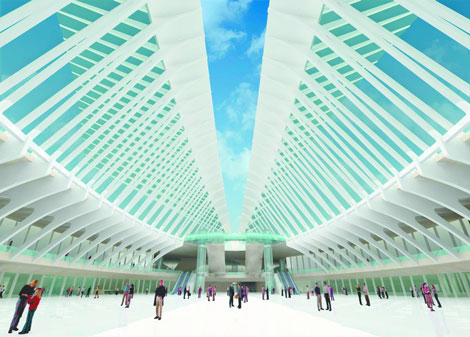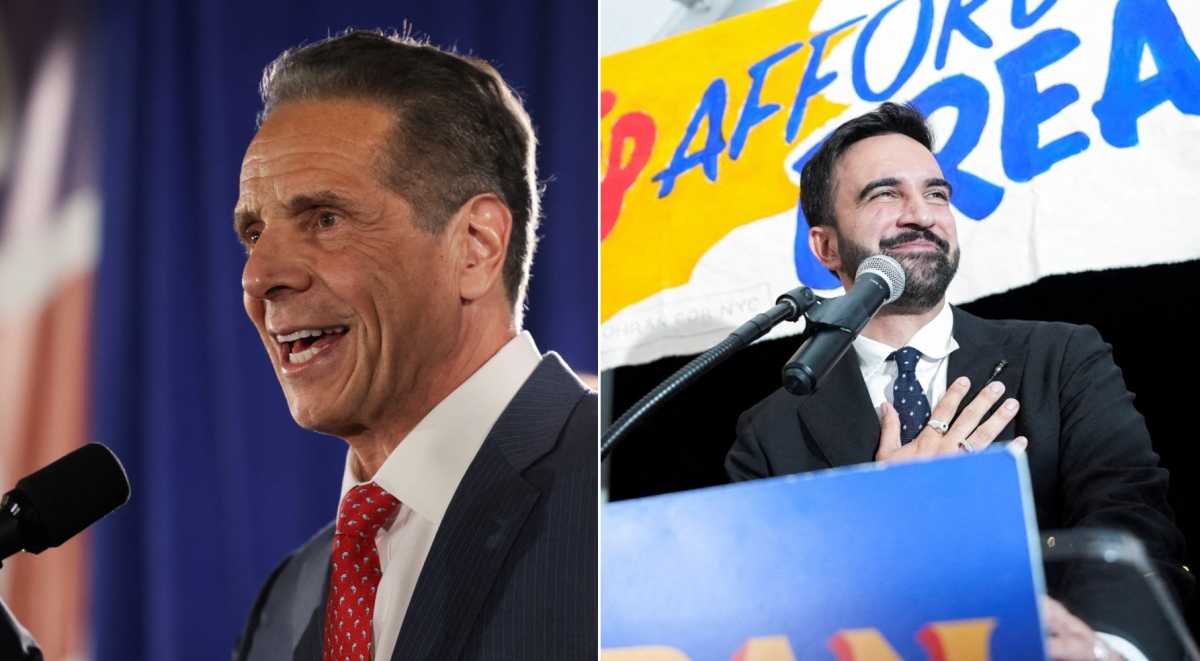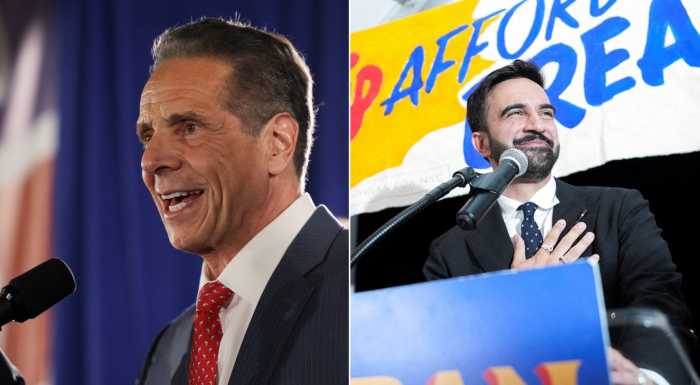By Josh Rogers
Calatrava, who was hired by the Port Authority to design a new, $2 billion transportation hub, fielded questions, accepted compliments, drew pictures to make his points and revealed some more details about the hub, which will provide better links between the PATH commuter trains, World Trade Center subway lines, the Broadway-Nassau-Fulton subways to the east and the Winter Garden to the west.
He said the glass design, inspired by the shape of a dove’s wings, would reduce the need for heat in the winter and air-conditioning in the summer. Immediately after his presentation before C.B. 1’s World Trade Center redevelopment committee, Calatrava explained the sunlight effects on the proposed Wedge of Light plaza, adjacent to the W.T.C. station.
Because of shadows coming from the Millenium Hotel and other nearby buildings, there will be no special lighting change on Sept. 11 at 8:46 a.m., the time when the first plane crashed into the towers, but at 10:28 a.m., the time the second tower collapsed, a ray of sunlight will shine down the edge of the plaza every sunny Sept. 11, Calatrava said
“This is the only one we can get a beam of light,” he said of the later time.
Daniel Libeskind, W.T.C. site plan architect, in December 2002 proposed a plaza with special lighting effects at the two key times, but months later, the Wedge became mired in confusion and controversy when the Millenium’s architect, Eli Attia, released a shadow study contradicting Libeskind’s original claims. When Calatrava’s design was unveiled at the end of January, Libeskind called Calatrava’s interpretation of the Wedge of Light idea “brilliant.”
C.B. 1 members were equally enthusiastic about Calatrava’s center.
“It’s absolutely a fantastic design,” said the board’s Michael Connolly. “I hope you’ll do everything in your power to keep from changing it.”
Plans are to begin construction later this year and open the first part of the center in 2006. The station would be completed in 2008.
The design has received rave reviews from many, although there has been some criticism of the $2 billion cost, particularly since the center will not bring new service Downtown. Officials are now studying four ways to connect Lower Manhattan to J.F.K. Airport and the Long Island Rail Road. The airport link would either be to the proposed $750 million Fulton Transit Center or a site closer to the W.T.C. center, but regardless of where the airport train platform is, there will be an underground walkway leading into the Calatrava station.
No one at Wednesday’s meetings criticized the plan, but Calatrava appeared to address the cost concerns anyway.
“When you do a station, you are doing it for the next generation and even the next generation [after that],” he said. “The people who built Grand Central are not there but you feel that they wanted to tell us something.”
Calatrava, a native of Spain, drew a detailed map with illustrations on a reporter’s notebook to explain exactly how he sees the center fitting in the Downtown neighborhood. He imagined a walk from City Hall through City Hall Park, past St. Paul’s Chapel, through St. Paul’s courtyard cemetery, through his train station to the proposed W.T.C. memorial, which will include a large number of trees.
“You go from significant buildings to green space to significant buildings to green space,” he said.
Calatrava, who is also an engineer, said in warm weather the station’s ceiling would be opened, and on hot and humid summer days, the open top would create a wind effect allowing for a more efficient air-conditioning system. In the winter, the large glass windows running the height of the station would draw in the sun and reduce the need for heat, he said. The part of the ceiling that opens is opaque to cut down on excess glare on bright days.
Some people who attended the meeting were concerned about the difficulty of keeping the large and unusually shaped windows clean, but the architect gave assurances that it would not be a struggle to maintain the center.
One board member, Rick Landman, at least partially joking, suggested that the structure looked more like folded hands than wings.
Calatrava said he liked the comparison, particularly since one of the images he draws frequently is a child opening his hands to release a dove.
“When you cross your hands maybe for some people it is like praying,” he said.
There will also be an underground connection to the Winter Garden in Battery Park City. Tony Cracchiolo, the Port Authority’s director of capital projects, said this walkway will go under West St. and will not have to be adjusted much if a vehicular tunnel is built under the roadway. He said the walkway would only have to be lowered about five or six feet if the tunnel is built.
Reader Services

































